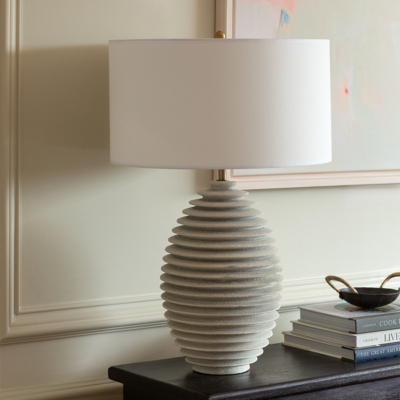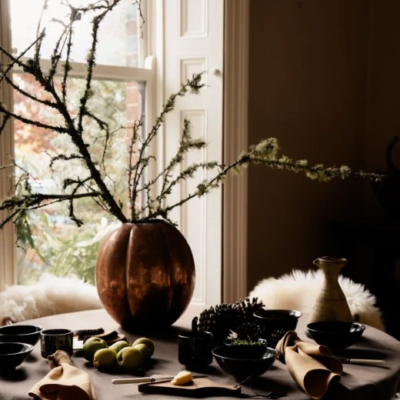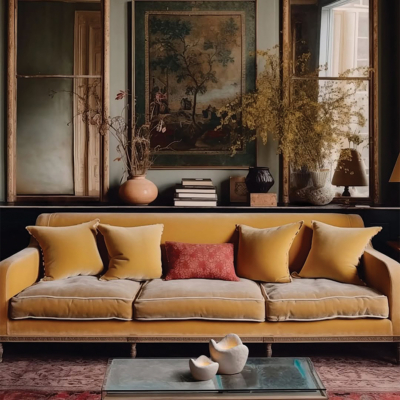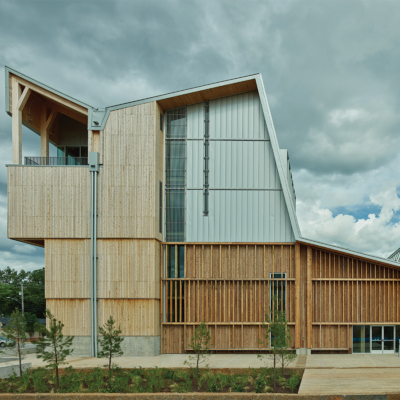With instinct and precision, designer Rose Uniacke explains how she transformed a London mansion into a family home with the help of architect Vincent Van Duysen and garden designer Tom Stuart-Smith …
PHOTOGRAPHY BY FRANÇOIS HALARD
“I fell for this house years before we bought it. There was a magic. But it was too large, too damaged and most definitely too big a project. My husband, David, and I walked away. Three years later it was still there. Nobody else would take it and we took the plunge.
The house was the home and studio of James Rannie Swinton, a Scottish society portraitist who commissioned the architect George Morgan to design it. Completed in 1860 on Warwick Square in Pimlico, it shares a lovely, big communal garden near the river.
An interesting part of the history of the house was when it became the home of Iain Macnab, a Scottish wood engraver who opened the Grosvenor School of Modern Art in 1925. Macnab’s wife, Helen Wingrave, taught dance in the school. We have a set of original black-and-white postcards, showing rooms filled with students at work at their easels, or in dance classes. The building looked so inviting, spacious, and open. A beautiful shell, and, in it, artistic endeavour. For me it was important to keep a sense of that atmosphere.
The last owner ran the building as an exhibition space for 30 years, and with the adaptations for public visitors and heavy white paint, it had taken on the feeling of an institution. In the basement, the house had been carved up into flats. The floors and most of the windows were gone, but some of the original fireplaces were still there, along with window shutters and all of the detail in the big rooms. Some really superb work had survived – plasterwork in particular.
We started by stripping everything out, so we could see how the house felt when completely bare. It felt like an abandoned palazzo with extraordinary volume in the rooms and wonderful layers of distressed colours from years of decoration.
I was determined to retain a real sense of the empty house. I wanted to engage with the grandeur but I also wanted to reimagine it. I thought I could cross it with something restrained and monastic.
With a strong sense of the concept it was vital to find an architect who spoke the same aesthetic language. I chose Vincent Van Duysen. I saw a real human touch in his work, and a clear understanding of the beauty of empty space.
There were many structural decisions to be made. One challenge was to find a way for the house to flow again. George Morgan’s original design had a beautiful flow between the rooms, but that had completely disappeared. We needed to repurpose much of the house and rethink the way it functioned.
The restoration and correct placement of the missing period detail was essential. We accurately remodelled cornicing, skirtings, architraves, doorframes and arches and where windows and shutters of the house were remade, the details had to be correct for the period. After that I wanted to add a fresh contemporary flavour, without the house losing its period identity.
Vincent had the great idea of turning Swinton’s portrait gallery into an indoor garden but it took time to evolve. I asked Tom Stuart-Smith to design the garden, the terraces, and the winter garden. His gardens are romantically wild and have an effortless feeling yet are deeply considered. Tom raised the level of the outdoor garden in a transformative way and suddenly the garden came towards the house. We laid old York stone as it would have been. It feels wonderful now, very elegant, thoroughly bedded in, and as if it has always been so.
I spent several years trawling salvage yards searching for materials. The weathered old terracotta tiles in the winter garden were a happy find, so too was the aged English limestone on the kitchen floor. We found marble baths, a Regency roof light that we used in a bathroom, taps, a tarnished copper shower head that hangs in the steam room, and many other things.
There are a lot of intentionally empty spaces – above fireplaces and whole walls that would typically hold pictures. I think these understated elements are the things that make everything work as a whole.
Art was an integral part of the whole. David and I bought things that moved us in some way, that we wanted to live with. But never with a specific wall in mind, as I think that approach can be very compromising. Throughout I was trying to allow the spirit of the house to come through so the natural raw space is always visible, should you care to look for it.”
From: Rose Uniacke at Home, with texts by Alice Rawsthorn, Vincent Van Duysen, François Halard and Tom Stuart-Smith, published by Rizzoli.
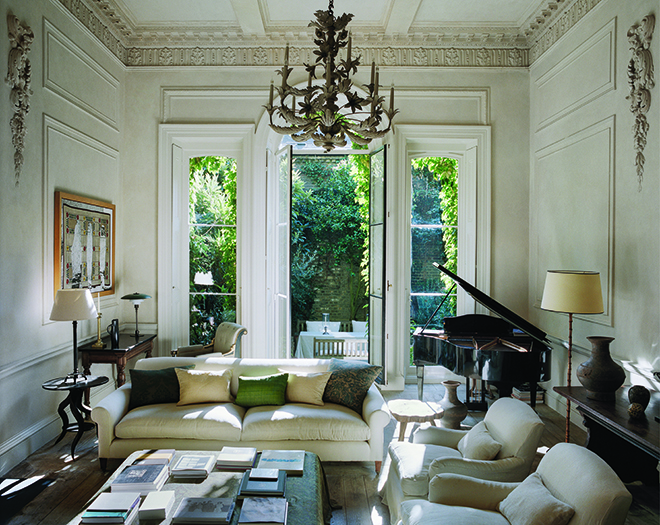
The drawing room features Uniacke’s childhood piano. The fire invites intimacy, the deep sofas informality. On the table is a mix of objects including a 15th-century marble tabernacle surrounded by a large Warring States Chinese urn, a piece of Lalique glass and a group of Francis Alys drawings. Of the wall colour, Uniacke says she was looking for the dry feeling of an old white.

In the hall Uniacke insisted on “nothing unnecessary, no clutter”. When stripping back the hall wall, she found a fragment of stone, proving there had been a significant stone staircase there, which she got permission to reinstate. “I looked all over London for examples of period cantilevered stone staircases – sometimes even craning my neck to look through other people’s hall windows.”
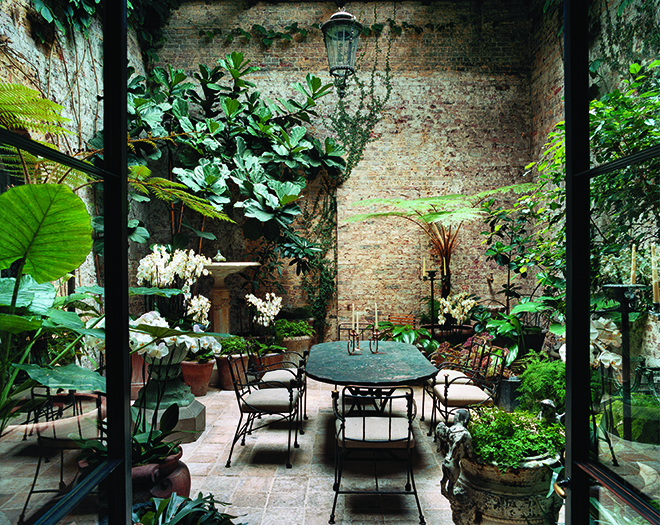
Wild planting and candles create a sense of theatre in the winter garden created with the help of Tom Stuart-Smith. A late 19th-century marble fountain sits in the corner; Diego Giacometti chairs and a dented Marcel Breuer chaise longue sit around a simple garden table; a granite sculpture by Ugo Rondinone sits behind the planting. “We always have two large buckets of water sitting in the corners to keep the room moist,” says Uniacke.

The kitchen was originally designed around an 18th-century painted breakfront cabinet that filled the wall. The original central island was removed in favour of a small breakfast table. The cone lamps are original Syrie Maugham from the 1930s and inspired the ones Uniacke makes for her store. An abstract painting by Ryan Sullivan takes centre stage. There are open shelves and hanging pans and a walk-in fridge behind the jib door in the corner.
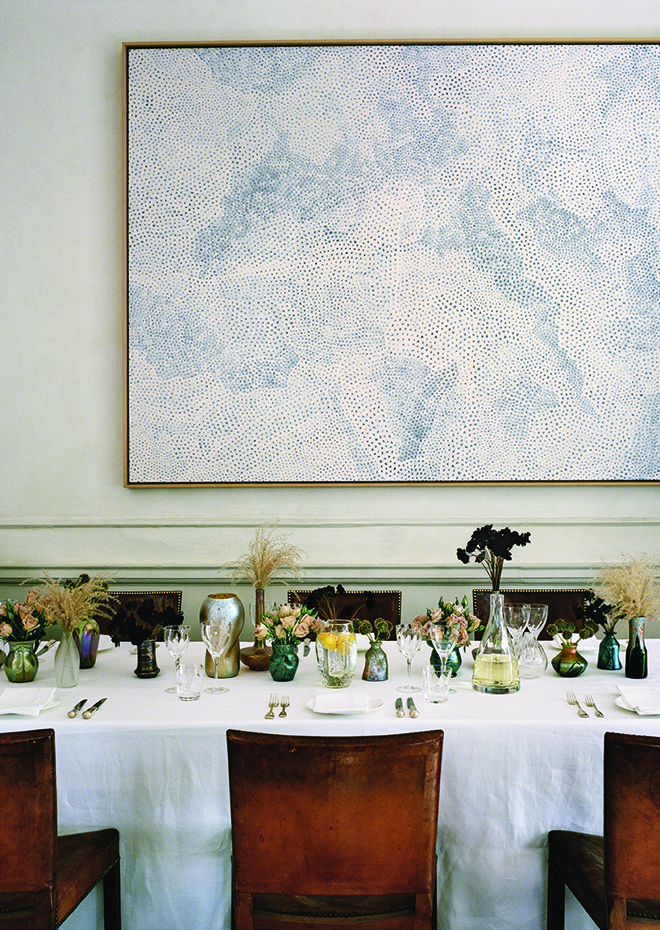
Rudolf Stingel’s “Untitled” artwork sits over a black marble table by Rose Uniacke, dressed in white linen for dinner.
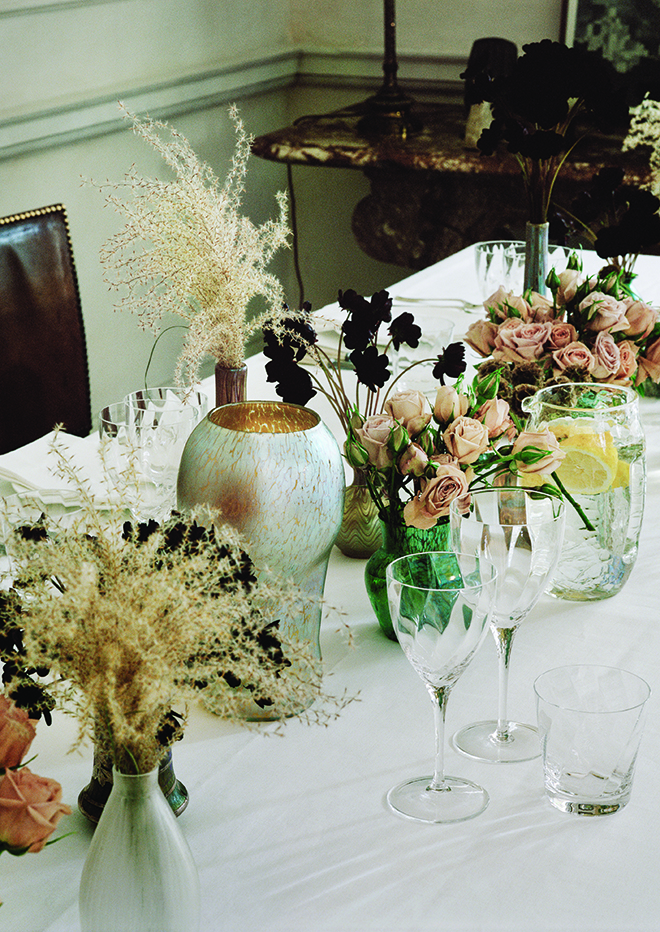
Loetz, Tiffany and contemporary Japanese glass are a beautiful combination.
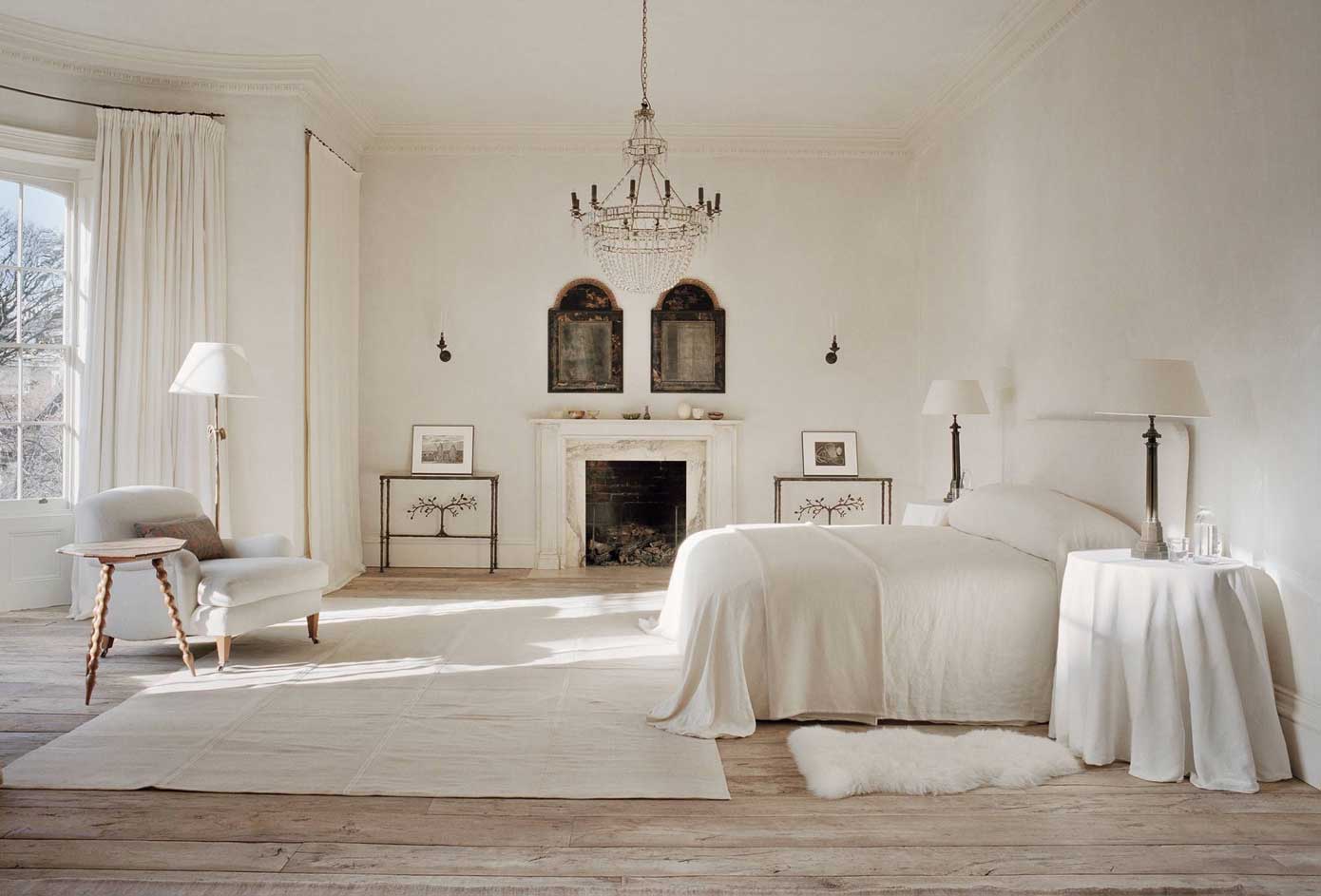
The bedroom is filled with light, yet monastic with walls of plain raw plaster. There is symmetry with pairs of cushions, mirrors, tables and leaning photographs. Says Uniacke, “I wanted the lights to emerge from the wall in the simplest, thinnest way possible with a classical touch. The design had a plain quality that worked well for the house, and followed the principle of just one colour throughout. It was the first light I designed and still sells in my shop today. I made most of the upholstered furniture myself, designing a handful of sofas and armchairs to give different moods to different spaces.”
From: Rose Uniacke at Home, with texts by Alice Rawsthorn, Vincent Van Duysen, François Halard and Tom Stuart-Smith, published by Rizzoli.
LOVETHEGLOSS.IE?
Sign up to our MAILING LIST now for a roundup of the latest fashion, beauty, interiors and entertaining news from THE GLOSS MAGAZINE’s daily dispatches.





